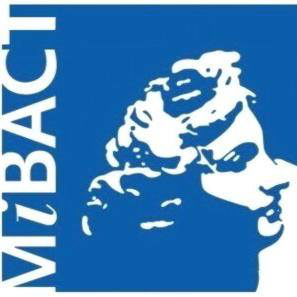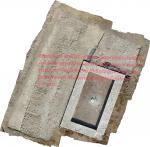Summary (English)
In 2021, two trenches were excavated, both situated in the territory of Gattatico (RE).
The first was opened inside the Bertana a Taneto Park, one of the few zones that can still be investigated in this area, lying across the present day via Manfredi. It was here that the presence of Roman dwellings was documented in the 1800s and 1960s. The excavation was preceded by a geo-magnetic survey, which showed the presence of two linear anomalies running SW-NE. The excavation revealed that they corresponded to a wide channel (a Republican aes that had been cut in half came out of the fill) and a small pisé wall that cut a layer rich in archaeological material, in particular black glaze fragments and pieces of a wattle and daub. This layer filled the uneven terrain at the base of the stratigraphy, which corresponded with the ancient bed of the torrent Enza that was formed by intertwining streams.The second trench was opened at the Castellazzo, a small medieval fort that was excavated in 2017. An area outside the structure was investigated, in the direction of the torrent Enza. At a few centimetres below the ground surface, an arrangement of cobblestones emerged that can probably be interpreted as a medieval road and some of its rebuilds. In fact, historical aerial photographs show that the trace corresponding with this infrastructure continues well-beyond the fort towards the north, and to the south seems to head towards the castle gate. Unfortunately, agricultural activity has partially compromised the stratigraphy.
The results of this campaign were particularly interesting: for the first time we have evidence for the Republican period in the area of ancient Tannetum, and an infrastructure was found that aids in our understanding of the landscape by the Enza torrent in the early medieval period.
- P. Storchi, Università di Bologna, Dipartimento di Beni Culturali
- L. Migliorati, Sapienza Università di Roma
- A. Colagrande, Università di Trento
- L. Contrafatto, Sapienza Università di Roma
Director
- L. Migliorati, Sapienza Università di Roma
Team
- A. Durante, Sapienza Università di Roma
- L. Restelli, Sapienza Università di Roma
- M. E. Amadasi, Sapienza Università di Roma
- M. Kjær Hæstrup, Syddansk Universitet Odense
- V. Colagrossi, Sapienza Università di Roma
- P. Storchi, Università di Bologna, Dipartimento di Beni Culturali
- A. Colagrande, Università di Trento
- L. Contrafatto, Sapienza Università di Roma
- A. Pansini, Sapienza Università di Roma
- M. Camorani, G.S.T. snc
Research Body
- Sapienza Università di Roma
- Syddansk Universitet di Odense
Funding Body
- Associazione Culturale Tannetum
- Autocarrozzeria Capelli (RE)
- Clevertech s.r.l./Giuseppe Reggiani, Cadelbosco Sopra (RE)
- Comune di Gattatico
- Comune di S. Ilario d’Enza
- Crowdfunding popolare
- GST snc servizi topografici di Marco Camorani
- Gruppo Storico Archeologico val d’Enza
- Italsughero/Fratelli Correggi, Montecchio (RE)
- Ra. Ga. Ricerca Archeologica Geofisica Applicata






![Download [PDF]](/excavation/skins/fasti/images/results/download_sml.png)